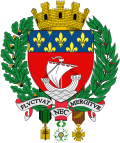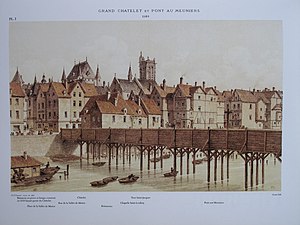| History of Paris |
|---|
 |
| See also |
|
|



During the 16th century, Paris was the largest city in Europe, with a population of about 350,000 in 1550.[citation needed]
The 16th century saw the Renaissance arrive in Paris, expressed in the city's architecture, art and cultural life. The Kings of France returned to Paris from the Loire Valley. Paris. In 1534, Francis I became the first French king to make the Louvre his residence.
Under King Francis I, the Renaissance style of architecture, imported from Italy, was widely used in churches and public buildings, replacing the Gothic style. Paris landmarks built during the 16th century include the Tuileries Palace, the Fontaine des Innocents, the Lescot wing of the Louvre; the church of Saint-Eustache (1532); and the Hôtel Carnavalet, begun in 1545, now the museum of the history of Paris.
During the century, Paris was the second most important centre of book publishing in Europe, after Venice. The University of Paris devoted its attentions largely to fighting the Protestant heresy, the King founded the Collège de France as a new centre of learning independent of the university.
Tensions between Protestants and Catholics grew, culminating in the St. Bartholomew's Day massacre in 1572, when several thousand Protestants were killed in the streets by Catholic mobs. At the end of the century, Henry IV was able to return to Paris as King, and permitted Protestants to open churches outside the city. Urban innovation in Paris during the 16th century included the first street lighting, by candles. The first theatre opened in Paris in 1548, and the first ballet performance took place at the French court in 1581.